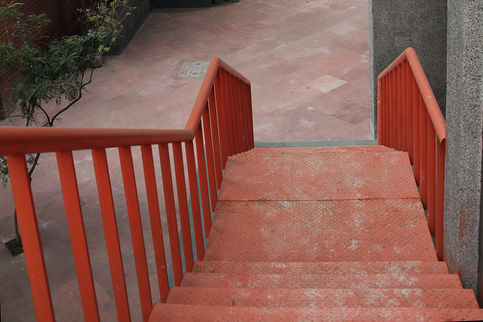Houses | South City Residence
The issue of privacy and independence was tackled with a different approach to the modern Indian family; two identical houses were designed which were joined together through balconies and a common compound area.
6450 SF
2019
Traditionally, the Indian family system has been associated with that of a joint family; in recent times, that has changed with each unit that is a part of the joint setup developing a specific requirement of space and privacy. The client brief necessitated a house for two brothers, on two adjoining plots.
The problem was tackled with a different approach to the modern Indian family; two identical houses were designed which were joined together through balconies and a common compound area. This gave the two brothers independent houses to project their vision and maintain a connection between both spaces at the same time. With a unified facade, the two houses end up looking one. Open spaces and connection with nature has been incorporated at varied levels with two gardens in the front and back of the house. A take on modern Indian joint family living space, Twin house sets a precedent for Indian homes today.
Houses | South City Residence
Retail & Hospitality | USI, Rohini
TRIVENI KALA SANGAM
The Triveni Kala Sangam is a cultural and architectural landmark in the city of Delhi. Designed by Joseph Allen Stein in 1957 in the part of Lutyens’ New Delhi dedicated to cultural activities, it remains as one of the icons of post-independence architecture in the city.
Stein, an architect, and urban planner was trained in California but produced the bulk of his remarkable oeuvre of buildings in India. Known for his sensitivity to form and climate, his architecture has inspired an entire generation of architectural practices.
Location: New Delhi
Typology: Commercial
Built up area: 17000 SF
Principal Architect: Amit Khanna
Completion Date: 2013
The existing building can be read almost like a campus of individual blocks, each specifically designed for a purpose that is reflected like their respective elevations. A four-story classroom block is joined by a wall-less entry foyer to the art gallery and the open-air auditorium. A three-story extension to the north was built in 1977, which accommodates additional classrooms, artists’ residences, and a 200-seat auditorium. Despite being built to Mr. Stein’s fastidious attention to quality, the building has started showing its age, both by being non-compliant to new safety norms and by general deterioration under the ravages of the climate, where temperatures swing by almost 50ºC through the year.
In 2013, AKDA began the process of upgrading the building, first to comply with more stringent fire-safety regulations and then to preserve the building’s façade, including the signature screen, or jaali. The physical manifestation of this process is an external metal stair, providing an additional egress point from the auditorium. Fabricated entirely from steel, with minimal vertical supports, the stair is attached to the side of the building on a largely blank façade. Rendered in bright orange, the addition enlivens the sculpture court into which it descends. Rather than attempt something that would blend in with the subdued character of the building, the stair was designed to be a departure from the old, retaining the spirit of what Stein sought, as opposed to the physicality. Part of the larger plan to upgrade the building includes internal improvements to the auditorium and the classroom block.







